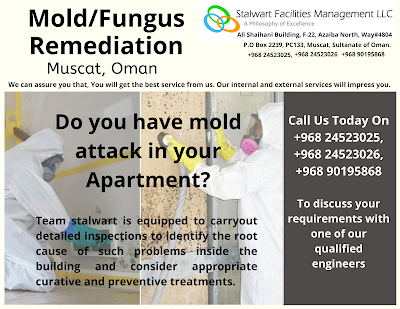Mold/Fungus Remediation
Whether it is a cold, damp winter or a warm, humid summer, activities at home can result in moisture indoors and the appearance of mold. Mold can grow on walls, clothes, books, toys, and even CDs. It can turn prized possessions into musty relics that only look fit for the garbage.
What is mold?
Molds are a form of fungus. There are many different types, and they can occur both indoors and outdoors. Molds produce spores, which spread by floating around in the air. Mould spores are present in all indoor environments. There is no way to prevent spores, and they can persist in conditions where mold itself cannot grow. Mold spores thrive in environments that are moist and warm, so when they land on a damp spot, they begin to grow. Molds can grow on a variety of different surfaces, including fabric, paper, wood, glass, and plastic. As they grow, they may digest the material they are growing on.
Types of mold
Nobody knows how many kinds of mold there are, but experts estimate that there may be 3000,000 or more different types. Some are more likely than others to appear in the home.
Common indoor mold are:
- Alternaria
- Aspergillus
- Cladosporium
- Penicillium
Moulds take a variety of forms and textures. They can be white, black, yellow, blue, or green and often look like discoloration or stain to a surface. They can also have a velvety, fuzzy, or rough appearance, depending on the type of mold and where it is growing.
How does mold get into a house?
Mold spores are everywhere, both indoors and outdoors, but they are not visible to the naked eye.
- Spores can enter the home
- Through the air
- By attaching to objects or people
Mold will only flourish if spores land somewhere that has the ideal conditions for growing, such as moisture and a supply of suitable nutrients. If the environment is unsuitable for the spores, they do not usually develop or cause a problem.
Places where mold often appears
- Areas where leakages and flooding have occurred
- Windows where condensation builds up
- Places where the air does not circulate, for example, behind a closet
- Wet cellulose materials are most supportive of mold growth.
Examples include:
Paper products, including wallpaper, cardboard, ceiling tiles, wood products, insulation materials, upholstery and other fabrics.
Mold growth is usually visible and often produces a musty odor. It can damage household items, and it can also have an impact on health.
Mold and health issues
Mold can pose a health Problem, especially for people with an allergy, an existing respiratory problem, or a weakened immune system.
- Breathing problems
- Allergy
- Aspergillosis
The WHO also note that mold and the microbial agents it produces may increase the risk of bronchial and fungal infections.
There is some evidence that it might lead to:
- Hypersensitivity
- Pneumonia
- Bronchitis
- Allergic alveolitis
- Chronic rhino sinusitis
- Allergic fungal sinusitis
- Lower respiratory tract problems in previously healthy children
Mold protection and prevention
Controlling moisture is the key to preventing mold from growing indoors. It is also important to keep the home clean and well ventilated.
The Environmental Protection Agency advice people to aim for humidity level of below 60%. Keeping an indoor space clean, dry, and well ventilated is the best ways to prevent mold from developing. Anyone who has concerns about mold in the home, the workplace, or an educational or other setting may contact us immediately know more about effective mold controlling and removal.
Call Us Today On +968 24523025, +968 24523026,+968 90195868 To discuss your requirements with one of our qualified engineers
Team stalwart is equipped to carryout detailed inspections to identify the root cause of such problems inside the building and consider appropriate curative and preventive treatments.























































